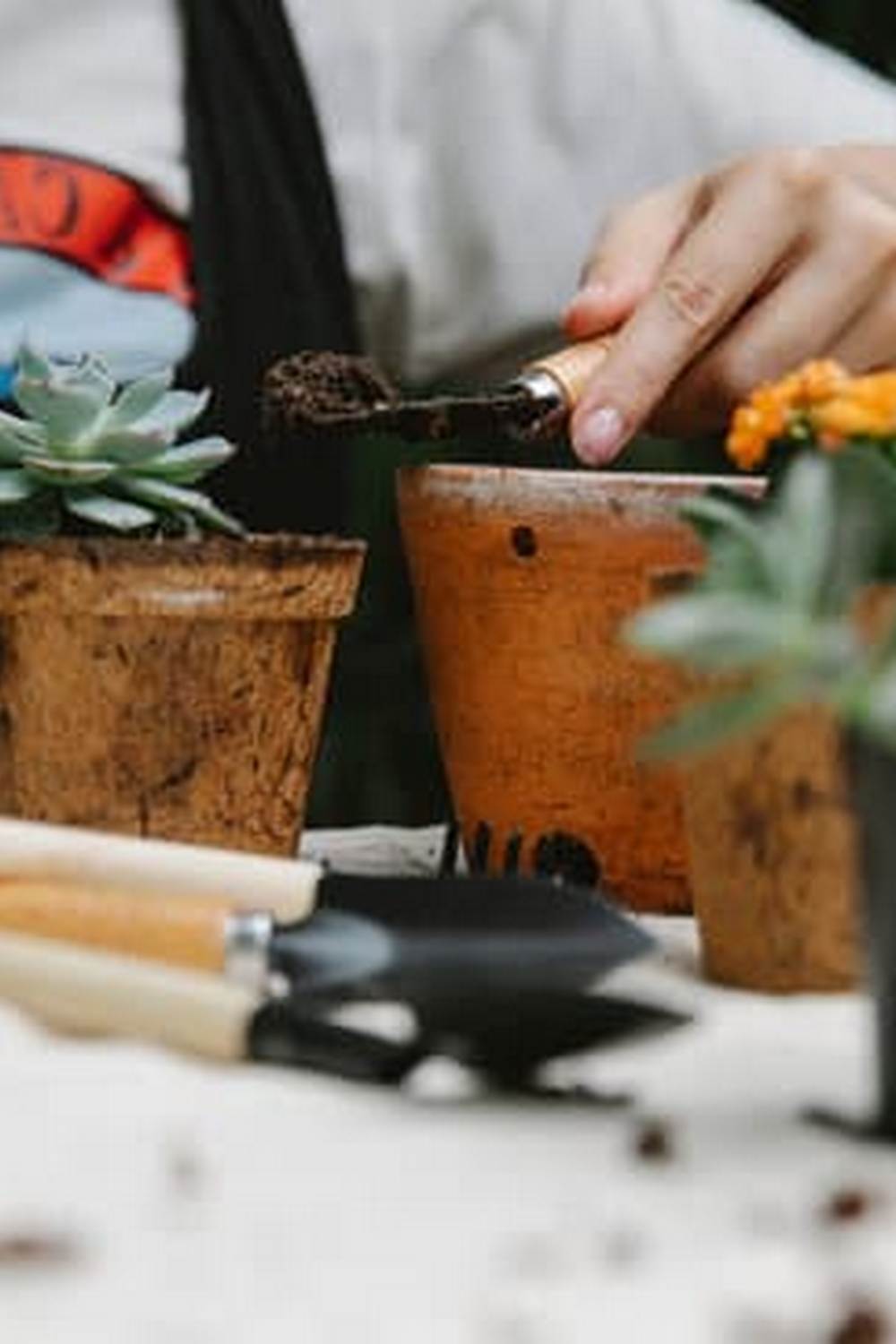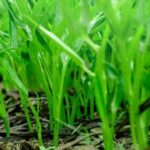Vegetable gardening can be a rewarding and fruitful endeavor, but it also comes with its own set of challenges, including the presence of invasive weeds such as crabgrass. In this article, we will delve into the topic of crabgrass herbicide for vegetable gardens, offering valuable insights and practical tips for effectively managing this common nuisance.
Understanding the impact of crabgrass on vegetable gardens is crucial for maintaining a healthy and thriving garden, making this an essential consideration for all vegetable garden enthusiasts.
Crabgrass is a pervasive weed that can wreak havoc on vegetable gardens if left unchecked. Its aggressive growth habits and ability to crowd out desirable plants make it a significant threat to the overall health and productivity of the garden. By identifying and differentiating crabgrass from other weeds, gardeners can take proactive measures to combat its presence, preserving the integrity of their vegetable plots.
The detrimental effects of crabgrass on vegetable plants cannot be overstated. Not only does it compete with vegetables for crucial resources such as water, nutrients, and sunlight, but it also creates an unsightly and unkempt appearance in the garden. In order to maintain a flourishing vegetable garden, it is essential to implement effective strategies for preventing and managing crabgrass infestations.
Identifying Crabgrass
Crabgrass is a common and persistent weed that can wreak havoc on vegetable gardens if left unchecked. Identifying and differentiating crabgrass from other weeds is crucial for effective management and prevention. Here are some tips to help you recognize this invasive plant:
- Leaf Characteristics: Crabgrass leaves are generally wider than most grassy weeds, with a characteristic light green or bluish-green color. The leaves also have a prominent mid-vein running through the center.
- Growth Habit: Crabgrass usually grows in clumps rather than spreading out in a uniform manner like other grasses. It tends to form dense mats that can overrun vegetable plants if not controlled.
- Seed Heads: One of the most distinctive features of crabgrass is its seed heads, which resemble fingers spreading out from the center of the plant. These seed heads are a key indicator of crabgrass infestation.
It’s important to be able to distinguish crabgrass from other weeds in order to implement targeted control measures and prevent its detrimental effects on vegetable gardens. By familiarizing yourself with these characteristics, you can take proactive steps to manage and eliminate crabgrass infestations before they become overwhelming.
In addition to visual identification, it may also be beneficial to perform a simple patch test using a recommended crabgrass herbicide for vegetable gardens in an inconspicuous area before widespread application. This will help confirm the presence of crabgrass and ensure the appropriate choice of herbicide for effective treatment. By being diligent in identifying crabgrass early on, you can effectively combat its spread and maintain the health and productivity of your vegetable garden.
The Impact of Crabgrass on Vegetable Gardens
Crabgrass, a common weed that plagues many vegetable gardens, can have detrimental effects on the health and growth of vegetable plants. Understanding these impacts is crucial in order to effectively combat and prevent the spread of this invasive weed.
The most obvious effect of crabgrass on vegetable gardens is competition for essential resources such as water, sunlight, and nutrients. Crabgrass grows rapidly and vigorously, often overshadowing and outcompeting vegetable plants for these vital resources. As a result, the growth and development of vegetables may be stunted or inhibited, leading to decreased yields and overall crop quality.
In addition to resource competition, crabgrass can also inhibit the germination and growth of vegetable seeds. The dense mat-like growth habit of crabgrass can smother young seedlings, preventing them from establishing themselves and thriving in the garden. This can result in patchy or uneven plant growth, reducing the overall productivity of the garden.
Furthermore, crabgrass can serve as a host for pests and diseases that can spread to vegetable plants. Its presence can create an ideal environment for harmful insects and pathogens to thrive, posing additional risks to the health of vegetable crops. Therefore, it is important to promptly address any crabgrass infestations in order to mitigate these potential risks to vegetable plants.
- Negative impacts of crabgrass on vegetable gardens:
- Competition for essential resources
- Inhibition of seed germination and growth
- Potential host for pests and diseases
Preventing Crabgrass in Vegetable Gardens
Proper Soil Preparation
One of the most effective ways to prevent crabgrass from infiltrating your vegetable garden is to start with proper soil preparation. This includes removing any existing weeds, especially crabgrass, before planting your vegetables. Ensure that the soil is well-tilled and free of clumps, as this will make it difficult for crabgrass seeds to take root. Additionally, consider adding a layer of mulch to help suppress weed growth and retain moisture in the soil.
Regular Maintenance and Monitoring
Consistent maintenance and monitoring of your vegetable garden are essential in preventing crabgrass infestations. This includes regular weeding to remove any emerging crabgrass before it has the chance to spread and mature. Be diligent about pulling out young crabgrass plants by hand, being careful to remove the entire root system to prevent regrowth.
Optimal Plant Spacing and Crowding Prevention
Proper plant spacing is crucial in preventing crabgrass from thriving in your vegetable garden. Overcrowded plants can create shady areas where crabgrass can easily take hold. By giving your vegetable plants adequate space for air circulation and growth, you can reduce the likelihood of crabgrass encroachment. Additionally, consider using companion planting techniques that naturally deter weed growth without resorting to herbicides.
By implementing these techniques and best practices for preventing crabgrass in your vegetable garden, you can maintain a healthy and thriving growing environment for your vegetables without the need for excessive herbicide use. Remember that proactive management is key in keeping crabgrass at bay and preserving the productivity of your vegetable garden.
Choosing the Right Crabgrass Herbicide for Vegetable Gardens
When it comes to dealing with crabgrass in vegetable gardens, selecting the right herbicide is crucial for effective control. With a variety of options available, choosing the most suitable crabgrass herbicide for your vegetable garden can be overwhelming. However, by considering factors such as the type of vegetables grown, stage of growth, and environmental impact, gardeners can make an informed decision.
One important consideration when choosing a crabgrass herbicide for vegetable gardens is selecting a product that specifically targets crabgrass while being safe for use around vegetables. Opt for herbicides labeled as safe for vegetable gardens and follow all application instructions carefully to minimize any potential harm to the vegetable plants. Additionally, look for selective herbicides that target only specific types of weeds while leaving the surrounding plants unharmed.
Another factor to consider when selecting a crabgrass herbicide for vegetable gardens is the formulation of the product. Some herbicides come in different formulations such as granular, liquid concentrate, or ready-to-use sprays. Consider the ease of application and coverage area when choosing the right formulation for your garden. Additionally, consider the residual effects of the herbicide to ensure it does not harm future plantings in the same area.
It’s also important to research and select a crabgrass herbicide that aligns with organic gardening practices if maintaining an organic garden is a priority. Look for herbicides that are approved for organic gardening and are made from natural ingredients rather than synthetic chemicals. By considering these factors and conducting thorough research on different crabgrass herbicides, gardeners can effectively choose the right product to protect their vegetable gardens from invasive crabgrass without compromising plant health or environmental impact.
Application and Usage
Preparing the Garden
Before applying any crabgrass herbicide in your vegetable garden, it is important to prepare the area properly. Start by removing any visible crabgrass and other weeds from the garden bed. You can use a hand tool or hoe to carefully uproot the weeds, making sure to remove as much of the root system as possible. It is also important to inspect the soil for any signs of existing crabgrass seeds or roots and remove them as well.
Once the garden bed is cleared of weeds, it is important to water the area thoroughly. This will help to moisten the soil and make it more receptive to herbicide application. Additionally, watering can help stimulate weed growth, making it easier to identify and target them with the herbicide.
Choosing the Right Crabgrass Herbicide
When selecting a crabgrass herbicide for your vegetable garden, it is crucial to choose a product that is specifically formulated for use in vegetable gardens. Look for herbicides that are labeled as safe for use around vegetables and follow all safety precautions provided by the manufacturer. It may also be helpful to consult with a professional at your local garden center to determine which herbicide would be best suited for your specific needs.
Applying the Herbicide
Carefully read and follow all instructions provided on the herbicide packaging before applying it to your vegetable garden. Make sure to wear protective clothing, including gloves and eye protection, when handling herbicides. Apply the herbicide evenly across the entire garden bed, taking care not to oversaturate or overapply in any one area. Depending on the type of herbicide used, you may need to reapply after a certain period of time or under specific conditions such as after heavy rainfall.
By following these step-by-step instructions for applying crabgrass herbicide in your vegetable garden, you can effectively manage unwanted weeds while maintaining a healthy environment for your vegetables.
Safety Considerations
When it comes to using herbicides in vegetable gardens, safety should always be a top priority. The use of crabgrass herbicide in vegetable gardens can greatly benefit the overall health and productivity of the garden, but it is essential to take the necessary precautions to ensure the safety of yourself, your family, and the environment.
First and foremost, it is crucial to carefully read and follow the instructions provided on the crabgrass herbicide product label. This includes information on proper application techniques, recommended protective gear, and any specific safety measures that should be taken. Additionally, be sure to choose an herbicide that is labeled as safe for use in vegetable gardens, as some products may be harmful to edible plants.
It is also important to consider the impact of herbicide use on surrounding wildlife and beneficial insects. Avoid applying herbicides on windy days to prevent drift onto unintended areas, and take care to avoid direct contact with non-target plants. Furthermore, store herbicides securely out of reach of children and pets, and never apply them near water sources or in areas where they may run off into waterways.
Finally, after applying crabgrass herbicide in your vegetable garden, be diligent about thoroughly washing any tools or equipment used in the application process. This will help prevent accidental exposure when handling these items in the future.
| Herbicide Safety Tips | Precautions |
|---|---|
| Read product label carefully | Avoid direct contact with skin |
| Choose herbicides safe for vegetable gardens | Store securely away from children/pets |
| Avoid spraying on windy days | Clean tools/equipment after application |
Maintaining a Healthy Vegetable Garden
Proper soil preparation is crucial for a healthy vegetable garden. Testing the soil’s pH levels and ensuring that it has the right balance of nutrients will create an environment in which vegetables can thrive while crabgrass struggles to take hold. Additionally, adding organic matter such as compost or aged manure can improve soil structure and fertility, making it more difficult for crabgrass to grow.
Another key aspect of maintaining a healthy vegetable garden is consistent watering and proper irrigation. Vegetables need regular water to thrive, but overwatering can create favorable conditions for crabgrass growth. It’s important to water deeply and less frequently, targeting the base of the plants rather than broadcasting water across the entire garden bed.
Fertilization is also important for promoting overall garden health and resilience against crabgrass infestations. Providing your vegetables with the right nutrients will help them grow vigorously and compete more effectively with weeds like crabgrass. Choosing a balanced fertilizer with essential nutrients such as nitrogen, phosphorus, and potassium can help promote strong root development and overall plant health.
| Soil Preparation | Watering | Fertilization |
|---|---|---|
| Testing soil pH levels | Consistent watering and proper irrigation | Choosing a balanced fertilizer with essential nutrients |
| Adding organic matter like compost or aged manure | Watering deeply and less frequently | Promoting strong root development |
Conclusion
In conclusion, the threat of crabgrass in vegetable gardens is a significant concern for many gardeners. As discussed, identifying and differentiating crabgrass from other weeds is crucial in order to effectively combat its detrimental effects on vegetable plants. The impact of crabgrass on vegetable gardens can be devastating, as it competes for water, nutrients, and sunlight, ultimately stunting the growth of desirable vegetables.
Preventing crabgrass in vegetable gardens requires diligent techniques and best practices, such as proper watering, mulching, and regular maintenance. However, when prevention methods are not enough, choosing the right crabgrass herbicide for vegetable gardens becomes essential. Selecting an effective herbicide that targets crabgrass while also being safe for use in vegetable gardens is a critical step in managing infestations.
It is important to keep in mind that safety considerations should always be taken into account when using herbicides in vegetable gardens. By following proper application and usage instructions and considering safety precautions, gardeners can effectively control crabgrass while keeping their vegetable plants unharmed. In closing, proactive crabgrass management in vegetable gardens is key to maintaining a healthy garden and ensuring the thriving growth of vegetables.
Frequently Asked Questions
How Do I Get Rid of Crabgrass in My Vegetable Garden?
One effective way to get rid of crabgrass in your vegetable garden is by pulling them out by hand, making sure to remove the entire root system. This method is labor-intensive but avoids the use of chemicals in your garden.
What Herbicide Is Safe for Vegetable Garden?
When it comes to using herbicides in a vegetable garden, it’s important to choose products that are labeled as safe for use around edible plants. Organic herbicides such as acetic acid-based ones can be a safer option for controlling weeds without harming vegetables.
Will Crabgrass Killer Hurt Other Plants?
Crabgrass killer, especially chemical ones, can potentially hurt other plants if not used carefully. It’s important to read and follow the instructions on the product label and use targeted application methods to minimize the impact on surrounding plants.

If you’re looking to get into vegetable gardening, or are just looking for some tips on how to make your current garden better, then you’ve come to the right place! My name is Ethel and I have been gardening for years. In this blog, I’m going to share with you some of my best tips on how to create a successful vegetable garden.





